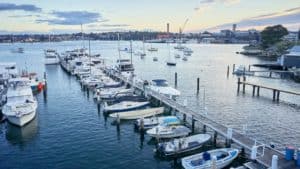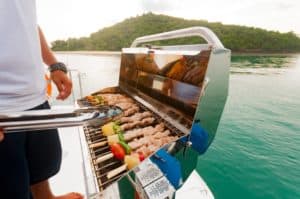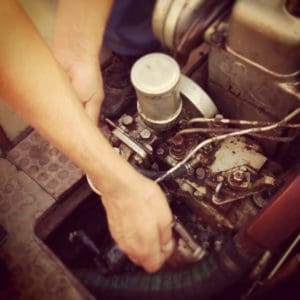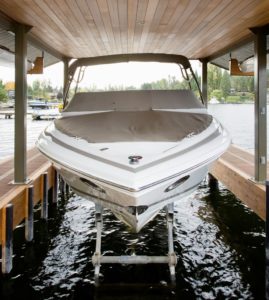If you’re thinking of getting out onto the water for the first time, there are quite a few things you’ll need to know. Of course, you’ll need the technical know-how and the practice to sail your boat safely, but are you prepared to learn a whole new language?
Well, it’s not quite that difficult, but to operate your new boat you’ll need to understand quite a few key nautical terms to make it safely from shore to sea and back again, especially if you need to communicate with another vessel. If you’re in an emergency situation, it’s likely that you’ll need to be able to quickly tell other boaters or emergency services the areas of your vessel experiencing an issue.
And if your right and their right are different, where do they pull up to rescue you and your crew? To avoid that, you need to make sure you’re up-to-date on all of the key terminology related to nautical life.
Here are a few of the key terms you’ll need to make sure you understand and how you might use them in your new hobby.
Referring To Your Boat
There are countless terms that refer to the very thing you’re taking out onto the water, all of which are rather specific in meaning.
Some common terms you’ll see in reference to your boat include:
- Vessel: Something that is a vehicle of transport on the water. Examples: Sailboats, rowboats, yachts, paddlecraft
- Powered Vessel: A vessel with an engine. Examples: Powerboats, sailing boats with engines, personal watercrafts
- Personal Watercraft: A vessel that has a fully enclosed hull that uses waterjet propulsion. Examples: Jet skis, jet-powered surfboards
Fun fact: Water skis and surfboards are not considered vessels
Referring To Parts
Every part and piece on your boat likely has a different nautical phrase than the wording you’d use on dry land.
- Beam: The widest part of your vessel
- Bow: The front of the vessel
- Cleat: A part on your boat that ropes (nautically known as lines) can be attached to
- Hull: The body of your vessel
- Port side: The left side of the vessel when you’re looking to the bow
- Starboard side: The right side of the vessel when you’re looking to the bow
- Stern: The rear of the vessel
Fun fact: The port side of your vessel has a red sidelight, and the starboard side has a green sidelight
Referring to Movement
These phrases are things that you’ll hear come up time and time again, all in reference to physical movement of your boat.
- Adrift: When your vessel is moving without your input, floating or moving completely at random
- Broach: When your vessel loses control and is forced into a very sudden, sharp turn.
-
-
- Often times, smaller vessels will capsize
-
- Give way: Reduce your speed, reverse, or change path so you don’t hit another vessel
- Knots: One knot is a speed of one nautical mile per hour
- Making Way: Your vessel is moving through the water and is en route to destination
- Nautical Miles: One nautical mile is the same as 1.151 mile or 1.852 kilometers
-
-
- Nautical Miles are often abbreviated to nm
-
- Navigable Waters: A space of water that you can get your vessel through safely
- Pitch: The vessel’s motion where the bow moves up and down
- Planing: You are planing when you’re going so fast that you’re skimming on top of the water
- Underway: This is simple, it just means that you’re moving and not anchored
Fun fact: Heavier boats aren’t capable of planing.
Referring to Water
Since you’re going to be spending quite a bit of time on the water, you’re going to need to know how to refer to the ocean and lakes around you. Whether this means things such as sandbars, banks, or rough waters, there will be terms you need to know in order to navigate as safely as possible.
- Awash: When your boat is so low in the water that the water is constantly coming up onto the surface of your vessel
- Bailer: A device that you can use to remove unwanted water from your boat
- Bank: Elevated sea floor
- Bar: A mass of earth formed by the moving sea.
-
-
- These are usually where rivers begin, and can be very dangerous to navigate
-
- Ebb: A current that’s receding, when the water levels are lower
- Echo Sounding: A technique you can use to measure the depth of water using sonar devices
- Marina: A place where boats can find fuel or other services, like mechanical repairs
Fun Fact: Marinas are often a great place to get your boat into the water due to their slipways and expert staff
Moor Your Boat at Corleone Marinas
Corleone Marinas offers premium harbor experiences across Sydney, including locations in Sydney’s most prestigious sites including Elizabeth Bay, Long Island, Balmain and Drummoyne. Each site offers a variety of options including berths, moorings, on-site slipways and shipwrights.
If you need maintenance or repairs for your vessel due to corrosion, we can help! Contact us today to learn about our full range of marina services.






